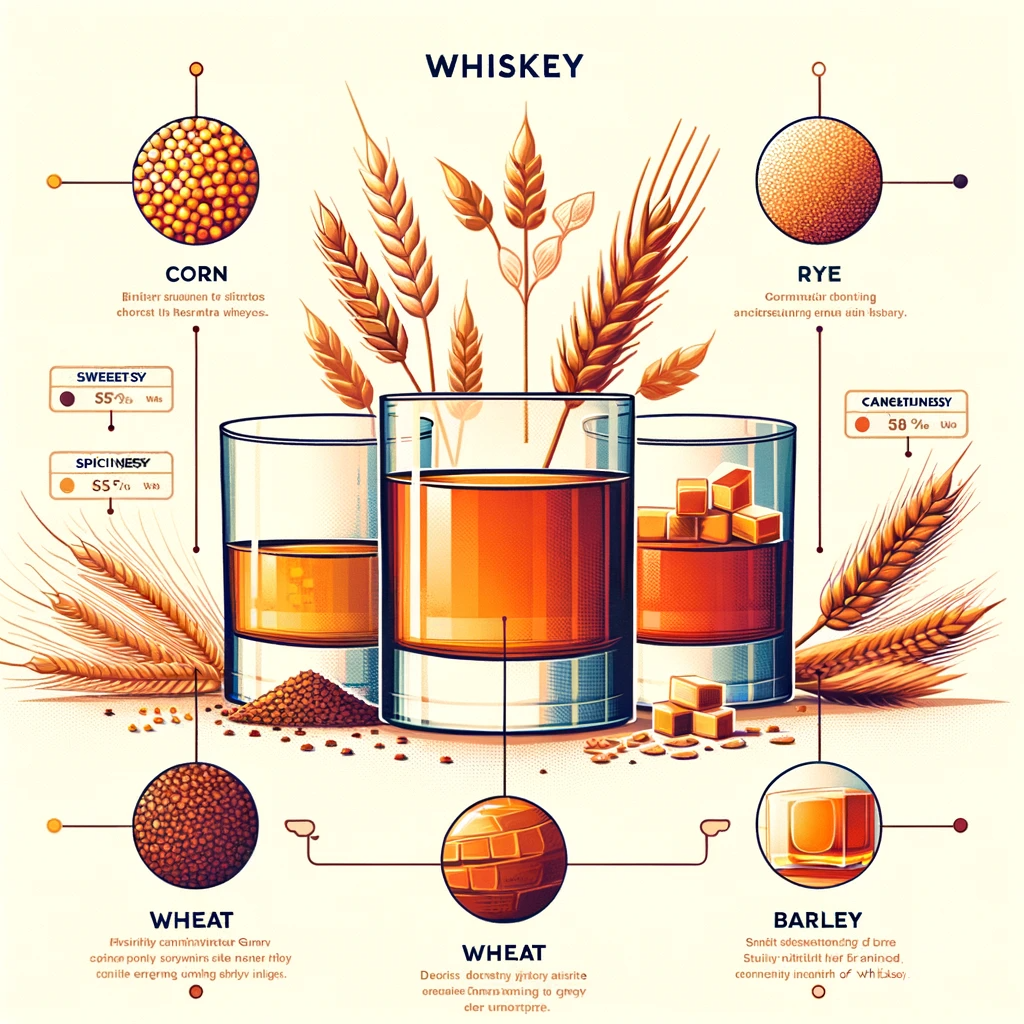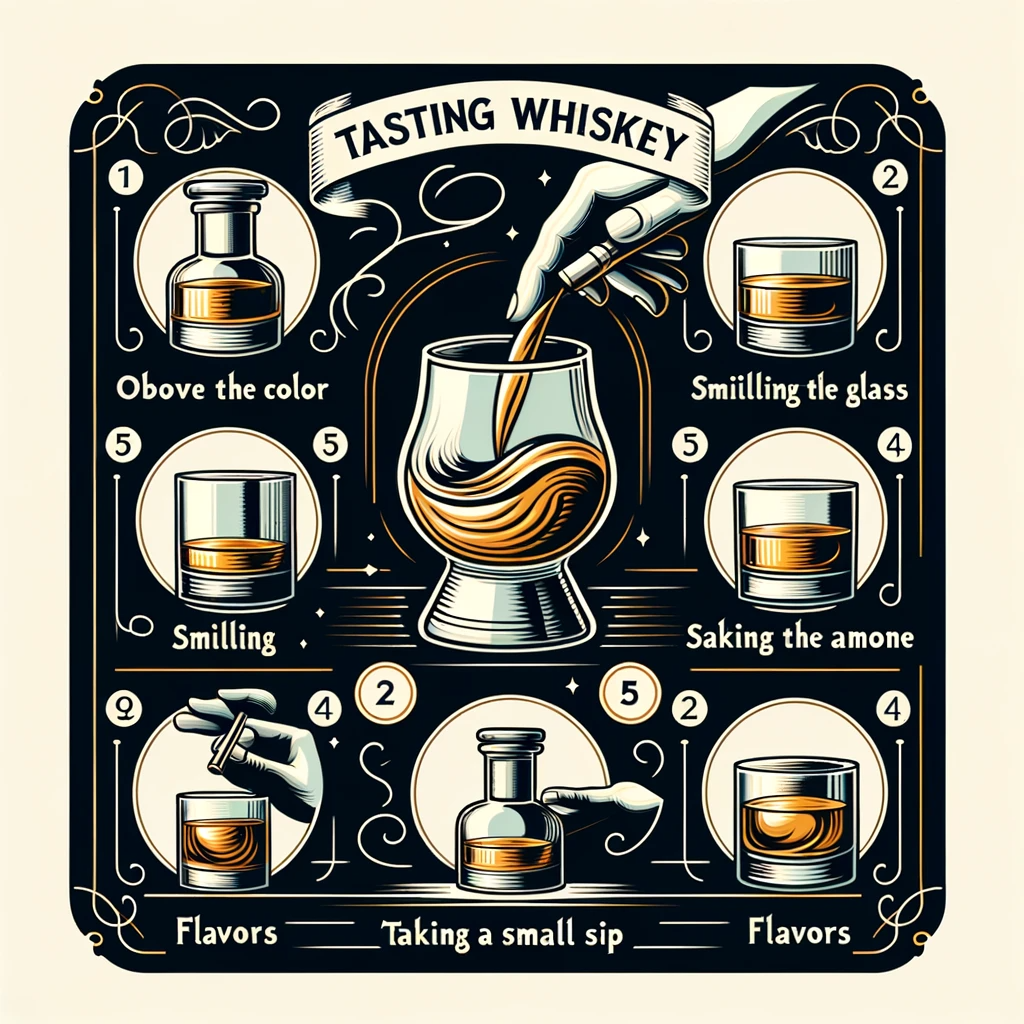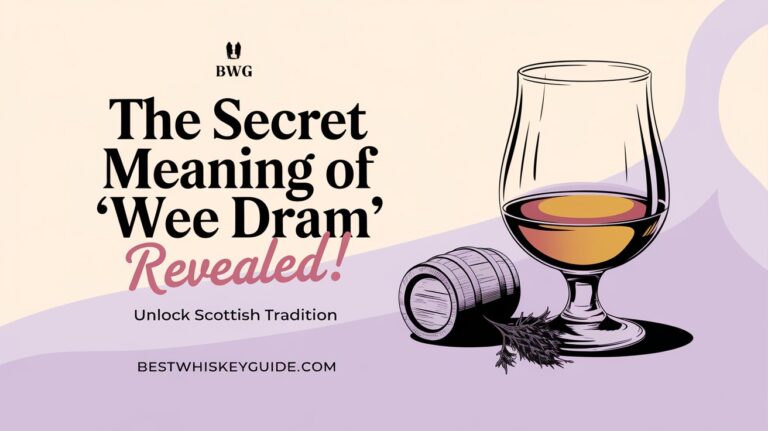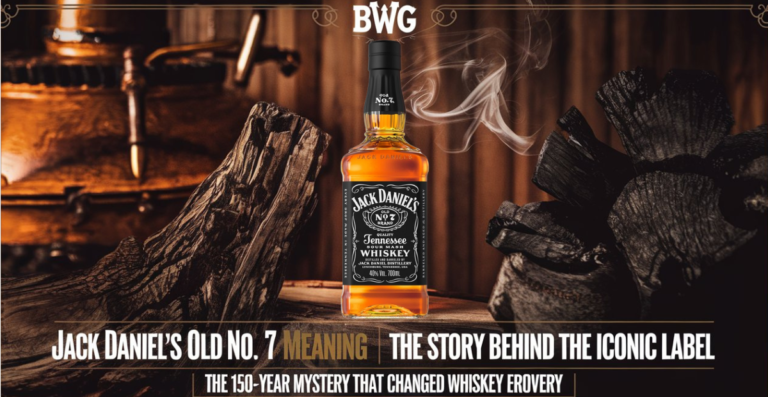Whisky Glossary
Welcome, whiskey wanderers and connoisseurs alike! We're diving into the rich tapestry of whiskey terminology, a key to unlocking the full appreciation of this storied spirit. Understanding these terms isn't just academic; it's a doorway to a deeper enjoyment and conversation about whiskey. So, grab a glass and let's explore the language of this liquid gold.
Table of Contents
Grains: The Foundation of Flavor
Grains are the backbone of whiskey, each bringing its unique character to the table. Let's break down the main players:
- Corn: The star in bourbon, lending a sweet, full-bodied profile.
- Rye: Spicy and peppery, rye gives the whiskey a bold, assertive edge.
- Wheat: Smooth and gentle, wheat whispers of honey and soft bread.
- Barley: The heart of Scotch and Irish whiskeys, offering a rich and malty canvas.
Whiskey Examples by Grain:
| Grain | Whiskey Example | Character Note |
|---|---|---|
| Corn | Buffalo Trace | Sweet, vanilla |
| Rye | Bulleit Rye | Spicy, bold |
| Wheat | Maker's Mark | Soft, gentle |
| Barley | Glenfiddich 12 | Rich, malty |
Grains set the stage for the whiskey's journey, influencing everything from texture to taste. It's like choosing the main character in a novel - each grain tells a different story.
Ageing: The Art of Time and Timber
Ageing whiskey is where magic meets science. It's all about patience and the transformative power of oak. Let's delve into how this process shapes the soul of whiskey.
The Influence of Oak
- Types of Barrels:
- American Oak: Vanilla, caramel sweetness.
- European Oak: Spicier, darker fruit notes.
- Barrel Size Matters:
- Smaller Barrels: Faster ageing due to more wood contact.
- Larger Barrels: Slower, more nuanced ageing.
Stages of Aging:
- New Make: Clear, unaged spirit.
- Young Whiskey: Bright, grain-forward flavours.
- Mature Whiskey: Balanced, with oak character.
- Cask Strength: Bold, uncut, and unfiltered.
Ageing isn't just a countdown; it's a dance between spirit and wood, where each year adds a layer of complexity. Imagine whiskey as a canvas, and time as the painter, adding strokes of flavour and colour with each passing year.
Proofing: The Measure of Spirit
Proofing is all about balance and strength in whiskey. It's not just a number; it's a crucial factor in defining the character of the final spirit.
Understanding Proof
- Proof Explained: It's double the alcohol by volume (ABV). So, a 40% ABV whiskey is 80 proof.
- History: The term comes from a historical method of testing alcohol strength using gunpowder.
Proofing Methods
- Dilution: Adding water to lower the proof for a smoother taste.
- Cask Strength: Bottled from the barrel without dilution, offering a robust and intense flavour.
Impact on Flavor and Experience
- Higher Proof: More intense, bold flavours. Think of it as turning up the volume of a song.
- Lower Proof: Softer, more approachable. It's like a gentle whisper of flavours.
Proofing is the final touch, the last decision in the whiskey-making process. It's like adjusting the seasoning in a dish to get it just right.
Flavour Profiles: The Symphony of Whiskey

Whiskey flavour profiles are a complex medley of notes and nuances. Like a symphony, each element plays a part in creating the overall experience.
Key Flavor Profiles
- Sweet: Often found in bourbon, with notes of vanilla, caramel, and honey.
- Spicy: Rye whiskeys excel here, offering peppery and bold flavours.
- Smoky: Peated Scotch whiskies bring a smouldering, earthy tone.
- Fruity: Look for these in some Irish whiskeys, where apple and pear notes dance on the palate.
Categorizing Whiskeys by Flavor
- Bold and Peaty: Think Laphroaig or Ardbeg.
- Smooth and Sweet: Such as Buffalo Trace or Glenmorangie.
- Rich and Complex: Like The Macallan or Highland Park.
Each whiskey tells its own flavour story, inviting you to explore and discover. It's a journey through different landscapes of taste, from the smoky isles of Scotland to the sweet fields of Kentucky.
Serving Whiskey: The Perfect Pour

Serving whiskey is an art in itself. How you serve it can greatly enhance your whiskey experience. Let's explore the best ways to enjoy this noble spirit.
Ways to Serve Whiskey
- Neat: Just the whiskey. No ice, no water. Pure and unadulterated.
- On the Rocks: Over ice. It cools the whiskey and slightly dilutes it, revealing new flavours.
- In Cocktails: Whiskey makes a great base for classic cocktails like the Old Fashioned or Manhattan.
Glassware Guide
- Glencairn Glass: The quintessential whiskey glass, designed to concentrate aromas.
- Rocks Glass: Sturdy and wide, perfect for whiskey on the rocks or cocktails.
- Cocktail Glass: Elegant, for those sophisticated whiskey cocktails.
Temperature Matters
- Room Temperature: Ideal for neat whiskey, allowing the full spectrum of flavours to shine.
- Chilled: On the rocks or in cocktails, perfect for a refreshing twist.
The right serving method can turn a simple whiskey into a memorable experience. It's like choosing the perfect outfit for an occasion – it just completes the picture.
Tasting Whiskey: A Journey for the Senses

Tasting whiskey is more than just drinking; it explores the senses. Follow these steps to appreciate the art of whiskey tasting fully.
Step-by-Step Tasting Guide
- Observe the Color: Like gazing into a liquid amber, the colour hints at age and cask type.
- Swirl the Glass: This helps release the whiskey's array of aromas.
- Smell the Aroma: Nose the whiskey gently. Each sniff reveals layers of scents.
- Take a Small Sip: Let it coat your palate, discovering the complex flavours.
- Identify the Flavors: From the initial taste to the lingering finish, each note tells a story.
Tasting Tips
- No Rush: Take your time. Good whiskey deserves attention.
- Cleanse Your Palate: Between different whiskeys, cleanse your palate with water.
- Keep an Open Mind: Each whiskey is unique. Explore without preconceptions.
Remember, whiskey tasting is personal. What sings to one person may whisper to another. It's about finding your tune in the symphony of flavours.
Conclusion: The End of the Barrel
In understanding whiskey terminology, we unlock the rich narrative behind every bottle. It's a language that connects us to history, craft, and community. As we journey through the world of whiskey, each term becomes a key, opening doors to new experiences and conversations.
So, whether you're a seasoned aficionado or a curious newcomer, remember: that whiskey is a journey, not a destination. Keep exploring, keep tasting, and most importantly, keep sharing – because the best whiskey is the one enjoyed together.
Further Learning Resources
- Books: "The World Atlas of Whisky" by Dave Broom
- Websites: Whisky Advocate, Master of Malt
- Clubs: Local whiskey clubs and tasting events
Now, raise your glass to the world of whiskey, a world where every sip tells a story. Sláinte!
FAQ's
What are the different types of whisky and how do they differ?
Whisky is broadly categorized into Scotch, Irish, Bourbon, and Rye. Scotch whisky hails from Scotland and has a smoky flavour due to peat usage, while Irish whisky is smoother. Bourbon is American-made with a sweet taste, and Rye offers a spicier profile. Each type undergoes distinct distillation processes.




